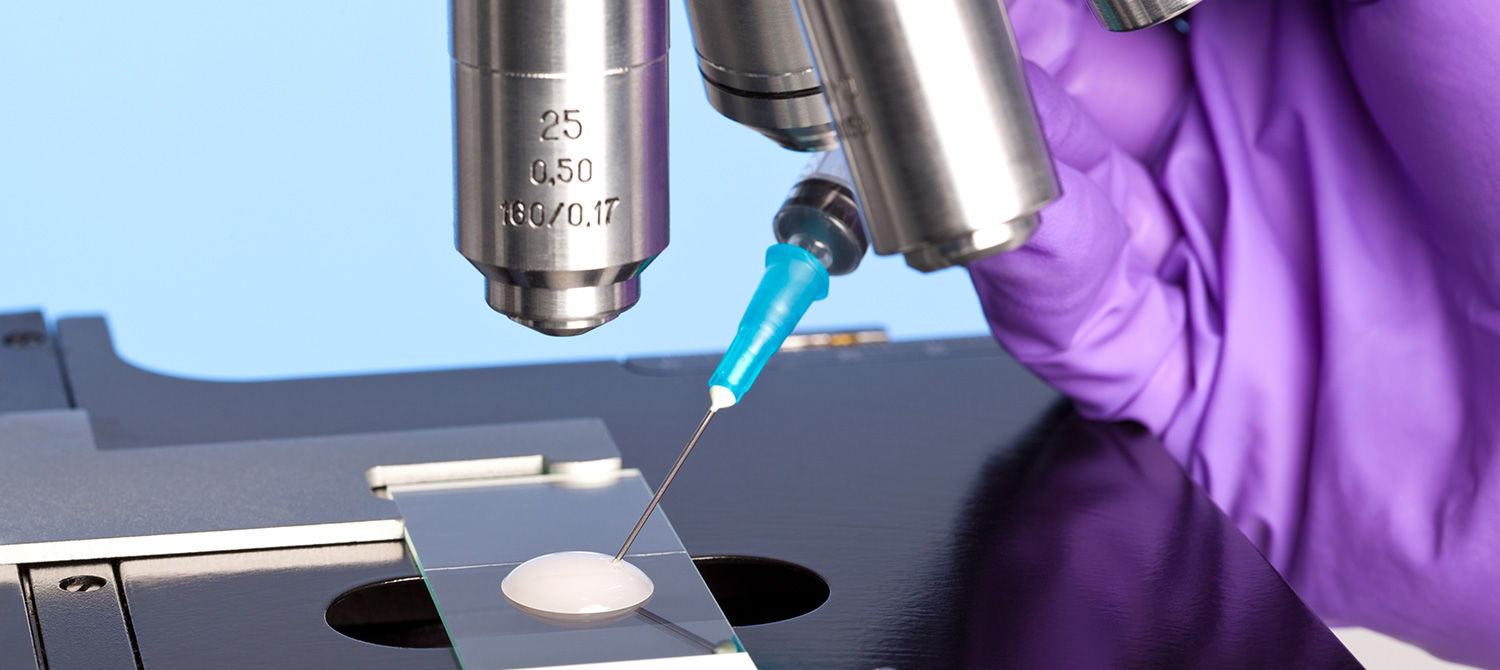Semen analysis

Semen analysis is the cornerstone of male fertility assessment. It is a simple test that allows the assessment of a man’s sperm for its fertility potential through measurement of specific parametres and is often a prerequisite for any individual or couple seeking ART services.
The technical process of conducting a semen analysis is very simple and streamlined. All that is required of the male partner is a semen sample, produced by masturbation in clean conditions. It is important that sample collection is performed after 2-5 days of sexual abstinence and that the male partner is healthy. A separate room at the clinic’s facilities is provided, with the necessary privacy to facilitate the process. The semen sample is collected in a sterile cup and given to the Andrology lab specialist, who will then begin the analysis.
Following analysis under microscope, along with additional laboratory measurements and tests, a final report from the Andrology lab is provided that assesses sperm quality using several different indicators and parametres. The most important parametres are:
- Semen volume: the amount of semen in mililitres per ejaculation.
- Sperm concentration: this is the number of sperm cells per mililitre (mL) of semen. It is the most basic assessment parameter and is highly reflective of the man’s fertility status. A low number of sperm cells is indicative of oligospermia and should be further investigated.
- Sperm motility: this parameter is an estimation of the sperm’s movement. The sperm’s movement is an important predictor of its reproductive potential, as sperm cells that are moving, and particularly those that move in one direction (progressive motility), are more likely to reach the egg and fertilise it.
- Sperm morphology: an important factor in sperm assessment, as abnormal sperm cells are more likely to carry genetic abnormalities and are thus unsuitable for ferrtilisation.
- Semen pH: this measures the acidity of semen, as an overly acidic environment impairs sperm health and function.
- Vitality: the percentage of live sperm in the semen sample. In severe cases of male infertility, there may be no live sperm in the sample at all, a condition known as azoospermia.
- White blood cells: if detected, these immune system cells are indicative of inflammation, which negatively affects normal sperm function.
Here are the reference values for normal semen analysis, provided by the WHO laboratory manual for the examination and processing of human semen (6th Edition, 2021):
- Semen volume (mL): ≥1.4
- Sperm concentration (106 /mL): ≥16
- Total motility (%): ≥40
- Progressive motility (%): ≥32
- Normal forms (%): ≥4%
- Vitality (%): ≥58
It is important to remember that these values are not absolute. In reality, these values were derived from a cohort of men who all achieved spontaneous conception within a year of attempts and they represent the 5th percentile of that group. This means that there were men in the cohort with worse values than these, who, regardless, managed to conceive spontaneously.
Additionally, semen analysis values are known to fluctuate significantly between tests, as they are affected by stress, inflammation and overall health. Therefore, do not be disappointed if your results are not within the reference range and consult a fertility specialist for the next move forward.
